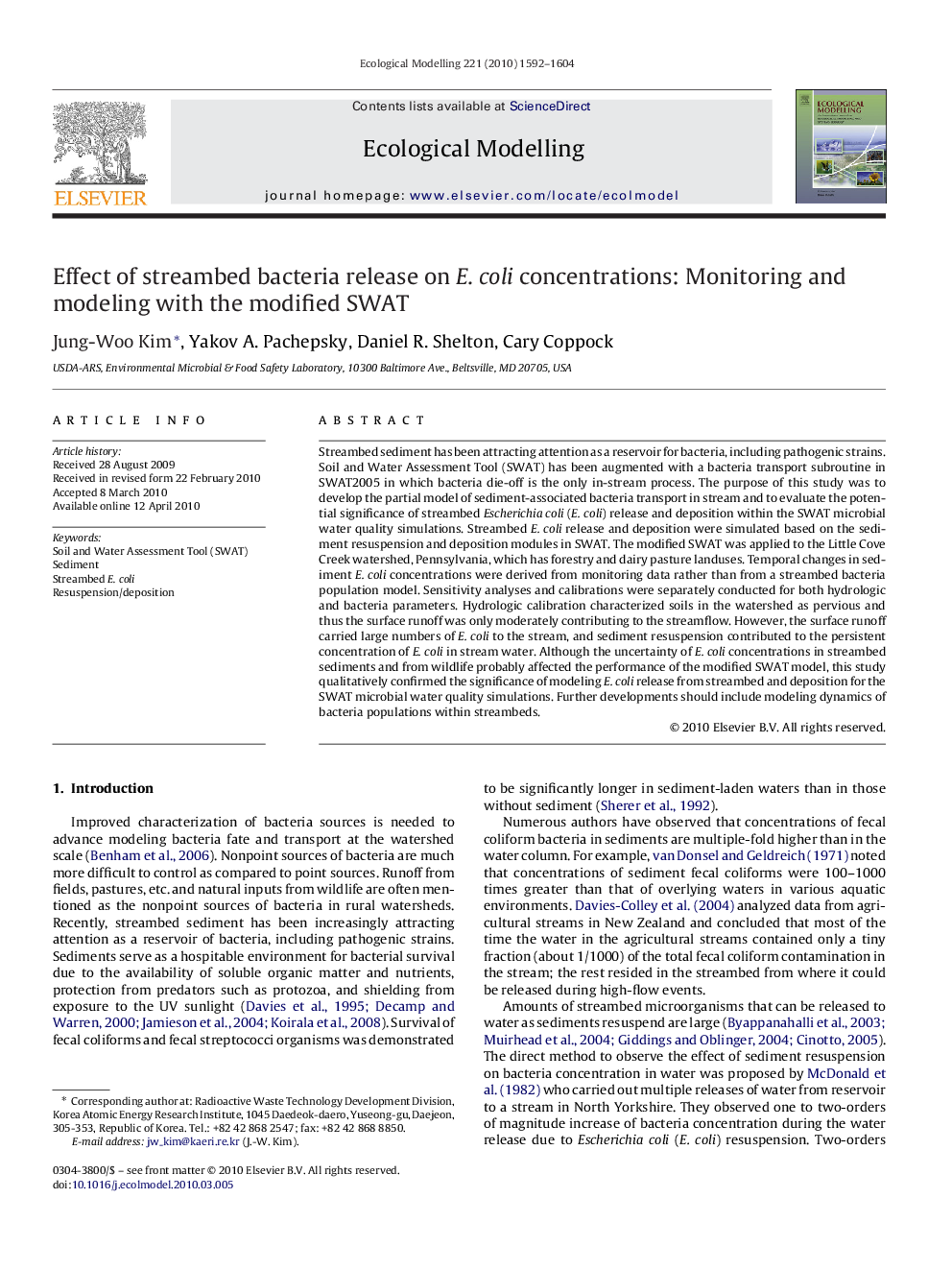| Article ID | Journal | Published Year | Pages | File Type |
|---|---|---|---|---|
| 4377257 | Ecological Modelling | 2010 | 13 Pages |
Streambed sediment has been attracting attention as a reservoir for bacteria, including pathogenic strains. Soil and Water Assessment Tool (SWAT) has been augmented with a bacteria transport subroutine in SWAT2005 in which bacteria die-off is the only in-stream process. The purpose of this study was to develop the partial model of sediment-associated bacteria transport in stream and to evaluate the potential significance of streambed Escherichia coli (E. coli) release and deposition within the SWAT microbial water quality simulations. Streambed E. coli release and deposition were simulated based on the sediment resuspension and deposition modules in SWAT. The modified SWAT was applied to the Little Cove Creek watershed, Pennsylvania, which has forestry and dairy pasture landuses. Temporal changes in sediment E. coli concentrations were derived from monitoring data rather than from a streambed bacteria population model. Sensitivity analyses and calibrations were separately conducted for both hydrologic and bacteria parameters. Hydrologic calibration characterized soils in the watershed as pervious and thus the surface runoff was only moderately contributing to the streamflow. However, the surface runoff carried large numbers of E. coli to the stream, and sediment resuspension contributed to the persistent concentration of E. coli in stream water. Although the uncertainty of E. coli concentrations in streambed sediments and from wildlife probably affected the performance of the modified SWAT model, this study qualitatively confirmed the significance of modeling E. coli release from streambed and deposition for the SWAT microbial water quality simulations. Further developments should include modeling dynamics of bacteria populations within streambeds.
